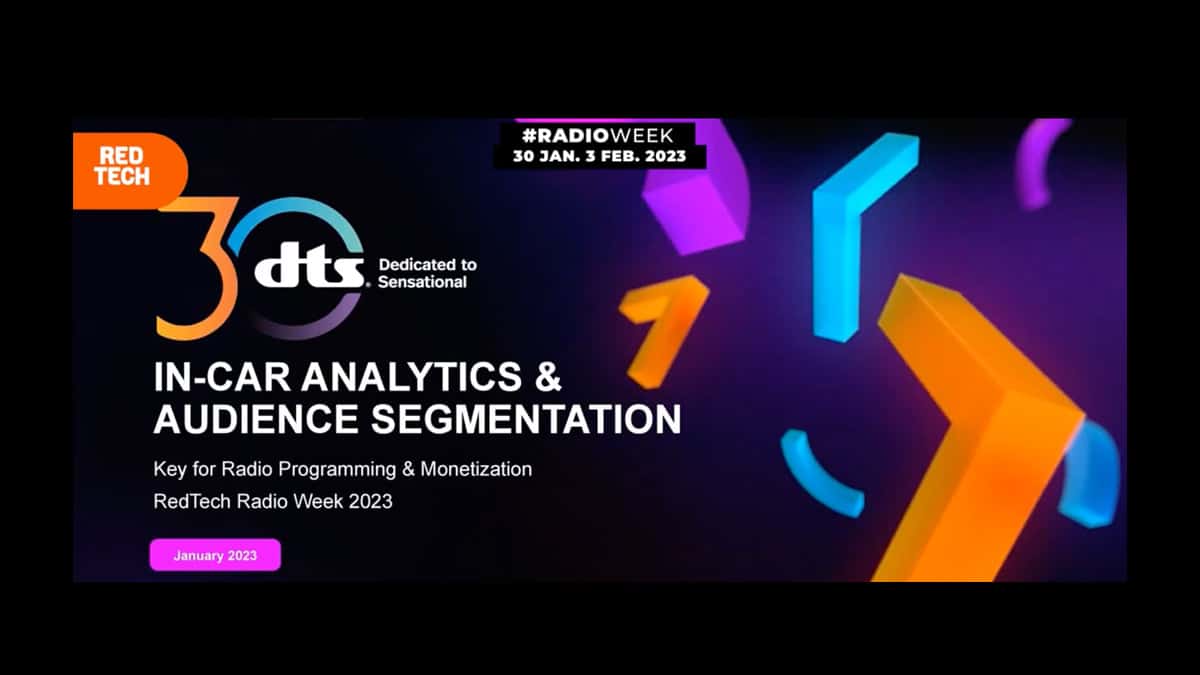Wherever you are in the world, in-car listening is extraordinarily valuable. Because in-car listening is captive, lean-forward or lean-in listening, drive time rates worldwide are much higher and often a significant proportion of a radio group’s revenue and profitability. Yet despite the value of the listener in the car, until recently, a real-time or close to real-time understanding of how they behave as listeners and consumers has never been possible.
To understand what’s changed and what this could mean for radio’s future, during the session, “Why in-car analytics & audience segmentation is key for radio programming and monetization,” RedTech’s Head of Strategy, Omar Essack, chatted with Joe D’Angelo, senior V.P. of broadcast and digital audio at Xperi, Christian Schalt, the chief digital officer at RTL in Germany and Pierre Bouvard, chief insights officer at Cumulus Media’s Westwood One in the United States.
What they said was exciting, and highlighted the remarkable opportunities data provide broadcasters wanting to understand their listeners when they are in their cars.
DTS AutoStage
Joe D’Angelo set the scene with a brief overview of DTS AutoStage, a global independent media platform for the automotive industry. It’s a hybrid radio solution designed to work with all radio standards worldwide. D’Angelo explained how he sees this technology dramatically increasing the measurement possibilities for the radio industry to better understand audiences in the car. The system gives insights to stations on their most popular formats and content, tells them about their audiences commute routes and more. He added that for stations to participate for free (whether they are broadcasting digitally or not), they should register and provide three things. These are:
- Static data: Station call letters, logo, name, slogan, etc.
- Streaming URL: When your over-the-air signal fades, the stream transitions in
- Live data from station’s programming system: Title and artist of songs, name of advertisers from ads running, DJ name/photo
The discussion transitioned to the consequences of this breakthrough technology for radio stations. For commercial radio broadcaster RTL Deutschland, targeting the drive time in-car listener is critical. Schalt said that this is a significant leap forward, but that it’s important to normalize the data to get it ready for practical use. “Since there is so much data available to us, we’ll need to identify some KPIs for the development of content. It’s very unusual to get this data for stations.”
Who is the listener?
Schalt explained that what RTL is most interested in is learning which sets of people use certain content; and then to be able to change that combination: “We want to know more about the people behind the dashboard; more segmented data is our long-term goal.”
As one of America’s most prominent radio broadcast groups, Cumulus Media’s Westwood One has managed to use its resources to know as much as possible about its audiences. However, the radio industry has never had any big sources of tuning data outside the home. “This is why this is really revolutionary,” said Pierre Bouvard. What this does right away is inspire confidence among agencies and advertisers. “The opportunity for attribution and proving that radio can drive commercial traffic is exciting. Only a third of listening occurs at home. Up until now, we have not been able to show retailers what listeners do outside their homes, where they are. “This is revolutionary to show trip patterns vs. retail locations.”
Benefiting the industry
D’Angelo added that Xperi is working with the industry to provide valuable tools for radio programmers, strategists and managers. “We are very collaborative with the broadcast industry, and we have had to educate the industry so they understand why they have to change certain behaviors, such as introducing metadata. In March, we’ll have a solid Phase I. We are adapting to fit different regions. Network and syndicated programming will come next.”
Bouvard closed the discussion by emphasizing that radio doesn’t need another measurement system, but it needs solutions that can prove impact. And DTS AutoStage does this through its knowledge of the vehicle’s location and the ads that are being played. “This means radio stations have the ability over time to prove that exposure to the ad caused people to go to a store. This data set that proves effectiveness is the holy grail, demonstrating impact: Ad exposure vs. visitation. This provides broadcasters with new revenue opportunities.”
For Schalt, the technology is key to defend the audio space in the car. “It makes radio resilient and lets us make smart decisions. This platform is an important part of the future audio space.”
Watch the video below.

